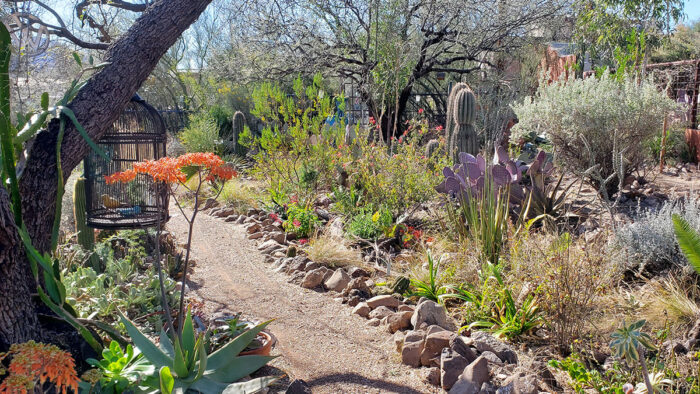
Shade is welcome most of the year in the Southwest, but too much shade can limit other options. Larger-leaved trees can cast dense shade, and when their leaves drop, extracting them from spiny desert companions can be difficult. However, many ornamental plants that thrive in the Southwest actually appreciate the bright dappled shade cast by the light open canopy of desert trees. This provides ideal conditions for succulents in the genera Aloe, Aeonium, Echeveria, and Agave, as well as cacti such as flowering Echinopsis hybrids.
The best trees for underplanting are those with smaller leaves that nearly disappear when they drop. The increased winter sunlight filtering through their open branches is ideal for the understory plants, but even a light canopy can still moderate winds and provide a bit of protection from light frosts.
Here are a few favorites.
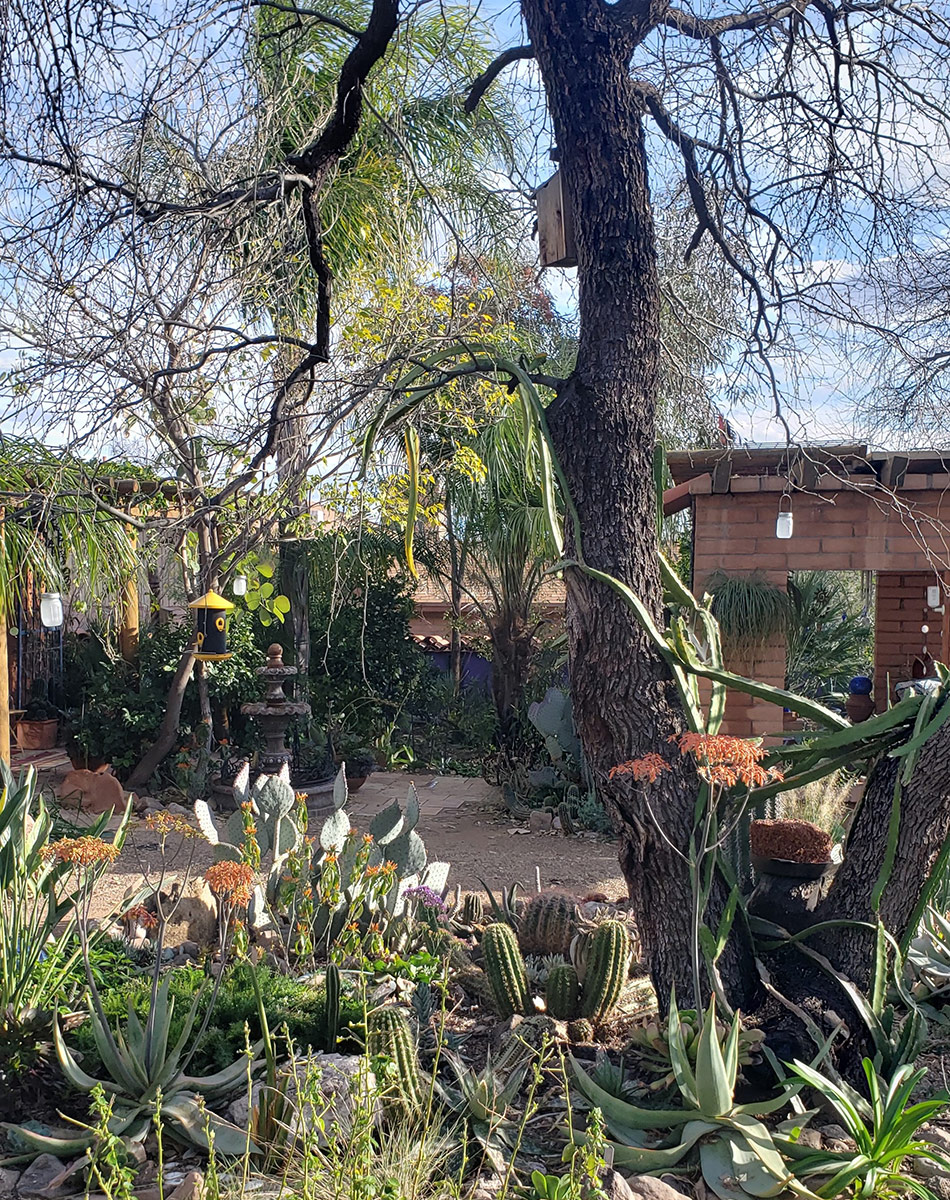
Velvet mesquite provides pollinator-friendly blooms in spring
Native from New Mexico to central California and deep into Mexico, velvet mesquite (Prosopis velutina, Zones 9–11) can form extensive bosques where ground water is accessible, or it can be found as scattered individuals in smaller desert washes. A valuable wildlife tree and reliable source of nectar for bees, it has a sweet scent that wafts through the garden in spring. Pods drop in midsummer and are easy to rake up. The canopy is not dense, and most leaves drop by midwinter, allowing winter sun to keep under-plantings happy. Long-lived and deep-rooted, its strong arching branches can host native desert mistletoe (Phoradendron californicum, Zones 8–11), a favorite food of the shiny black Phainopepla bird. In Zones 9 to 11 expect a velvet mesquite tree to reach about 25 feet tall and wide and to need no irrigation once established.
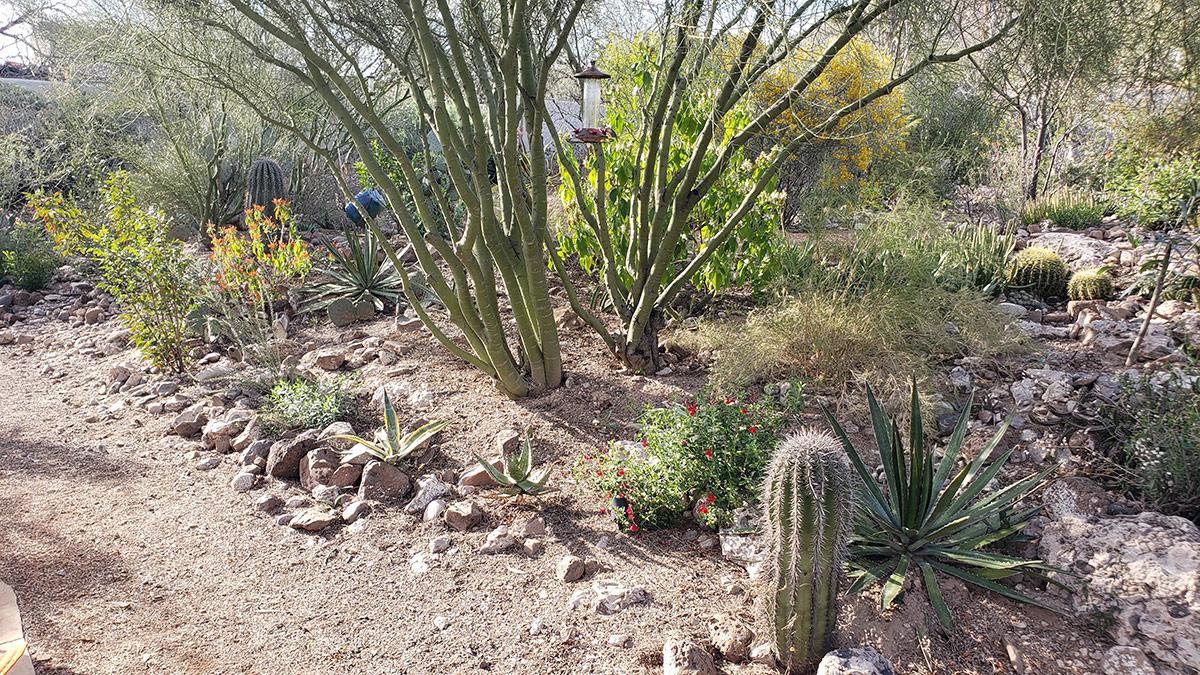
Little-leaf palo verde is a great tree for small gardens
Little-leaf palo verde (Parkinsonia microphylla, Zones 9–10) is a small tree that grows on rocky hillsides in Arizona, Baja, Sonora, and small portions of California and is easily recognized by its smooth bright green bark. Its tiny leaves are absent during extreme drought, but its bark continues to carry out photosynthesis. More sturdy and longer lived than the related blue palo verde (Parkinsonia florida, Zones 8–11), it grows slowly to a height of 12 feet or more and is well suited to small gardens. Spring flowers paint the hills in soft lemon-yellow each April in Zones 9 and 10. It is the perfect complement to native desert plantings.
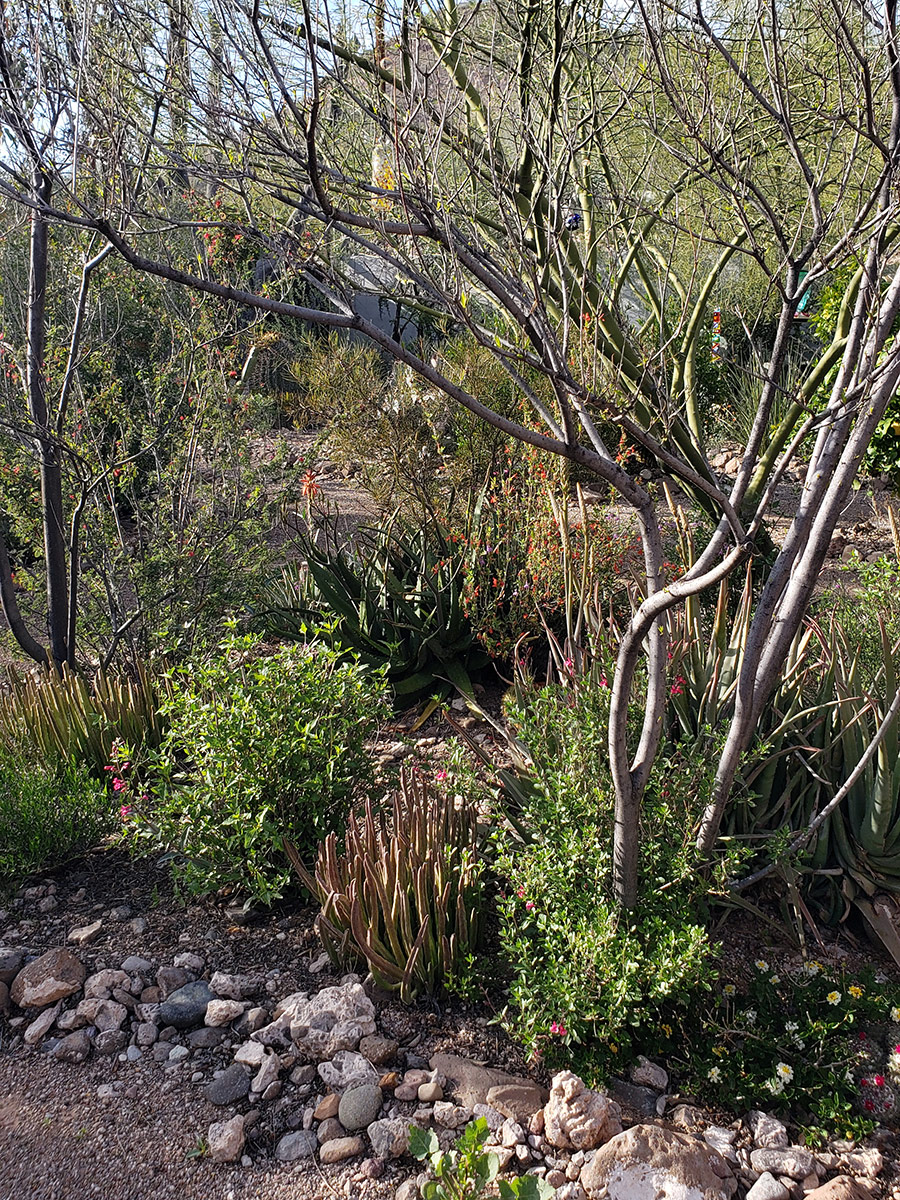
‘Maverick’ thornless honey mesquite is an excellent drought-tolerant tree
This species is widespread throughout the Southwest, as a small tree in good conditions, becoming more shrublike at the fringes of its range. ‘Maverick’ thornless honey mesquite (Prosopis glandulosa ‘Maverick’, Zones 7–11) is a selection that retains all the desirable attributes of the species: fragrant spring flowers, gracefully weeping branch tips, light green pinnate leaves, and an airy canopy. Maturing around 30 feet tall and wide, durable, and very drought tolerant, it thrives in our region. Once the small leaflets drop in late autumn, plants below are bathed in gentle winter sunshine.
Desert willow serves up waves of flowers through summer
If you live in the Southwest, you likely know desert willow (Chilopsis linearis, Zones 7–11) already. Ranging from Texas to southern Utah and central California, this species is frequently seen along desert washes, where it experiences drought more often than not, and many desert landscapes use this tree to full advantage. Numerous cultivars have been named over the years, and most were selected for lower seedpod production, but the flowers are what win people over. Clusters of fragrant trumpets appear in waves through the summer in shades of pink through burgundy and white, a favorite of hummingbirds and other pollinators. Leaves are narrow and willow-like, disappearing into the landscape when they drop in late fall. The canopy is generally upright and open, to as much as 18 feet tall and 12 feet wide, providing plants below with dappled light through the summer and allowing more sun during winter. Found naturally in Zones 7–11, some are known to succeed in sheltered microclimates of Zones 5 and 6, where they are well worth the extra effort.
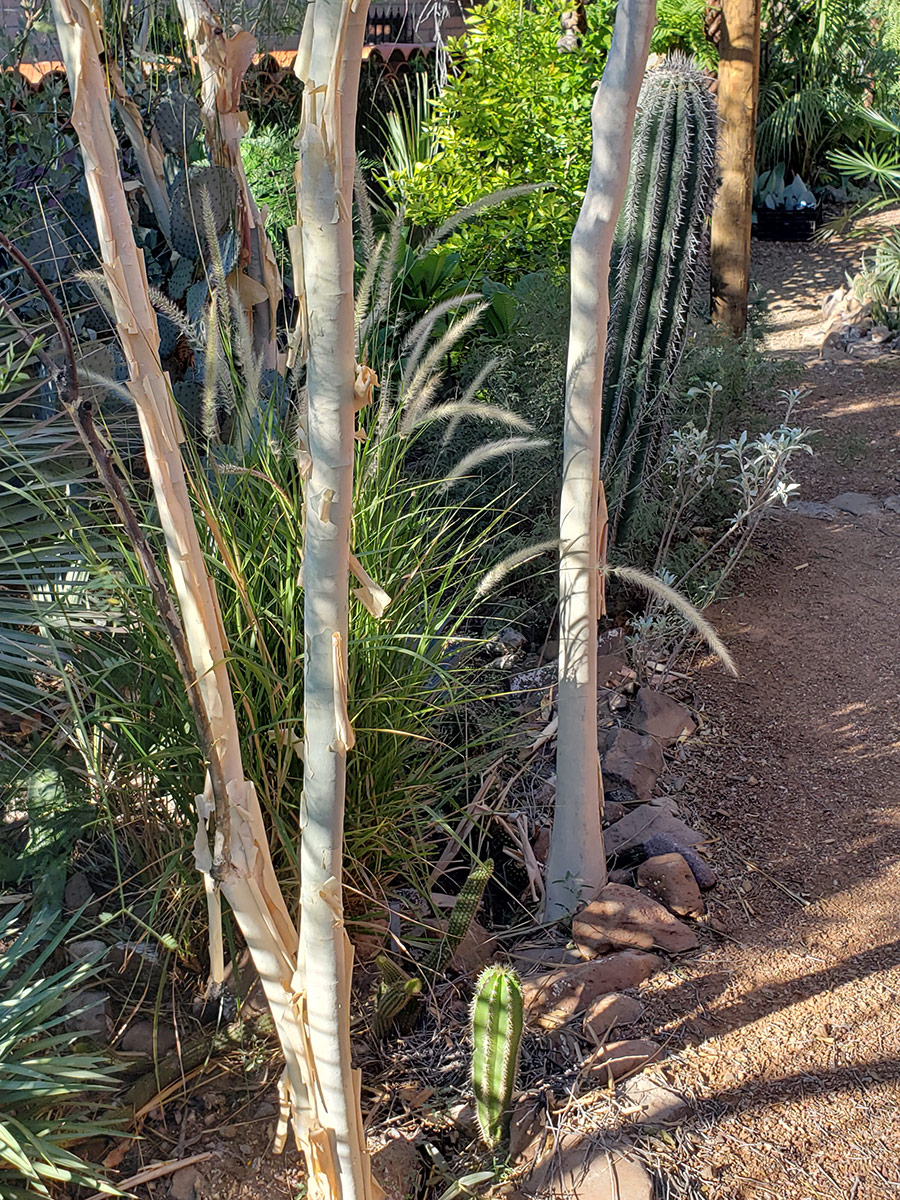
Palo blanco is a graceful tree with curling papery bark
Palo blanco (Mariosousa willardiana, syn. Acacia willardiana, Zones 9–11) is among my favorite trees, with a wispy form that casts the most delicate shade—just enough to perfectly accommodate an underplanting of choice cacti and succulents, and even flowering shrubs like Texas ranger (Leucophyllum frutescens, Zones 7–11) and emu bush (Eremophila maculata, Zones 8–11). Its modified leaves (phyllodes) are long and slender, sparsely arranged, and flitting in the lightest breeze. The 2-inch flowers are fuzzy, cream-colored catkins near the pendulous branch tips in spring. These graceful features complement the ghostly bark, smooth white and tan, curling away in papery layers and oddly reminiscent of paper birch (Betula papyrifera, Zones 2–7). Especially nice when planted in small groups, the slender trunks may reach 20 feet tall or more, with loosely spreading canopies to 10 or 12 feet wide. Extremely drought resistant but somewhat tender to severe frost, this tree thrives in warm microclimates.
—Dan Johnson lives and gardens in Denver and in Tucson, Arizona. He is an associate director of horticulture for the Denver Botanic Gardens.



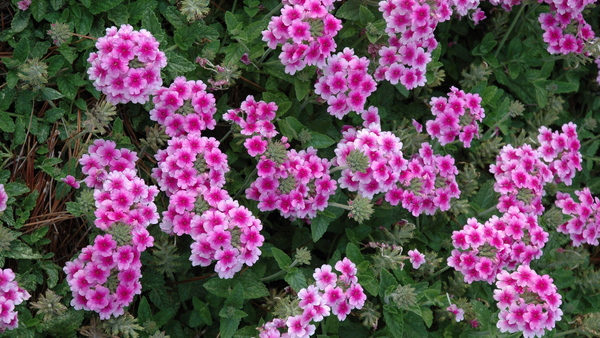

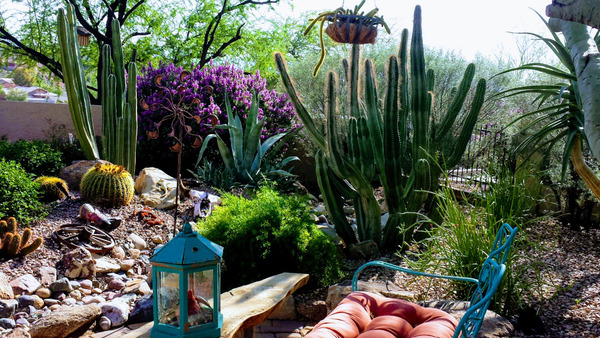












Comments
Log in or create an account to post a comment.
Sign up Log in